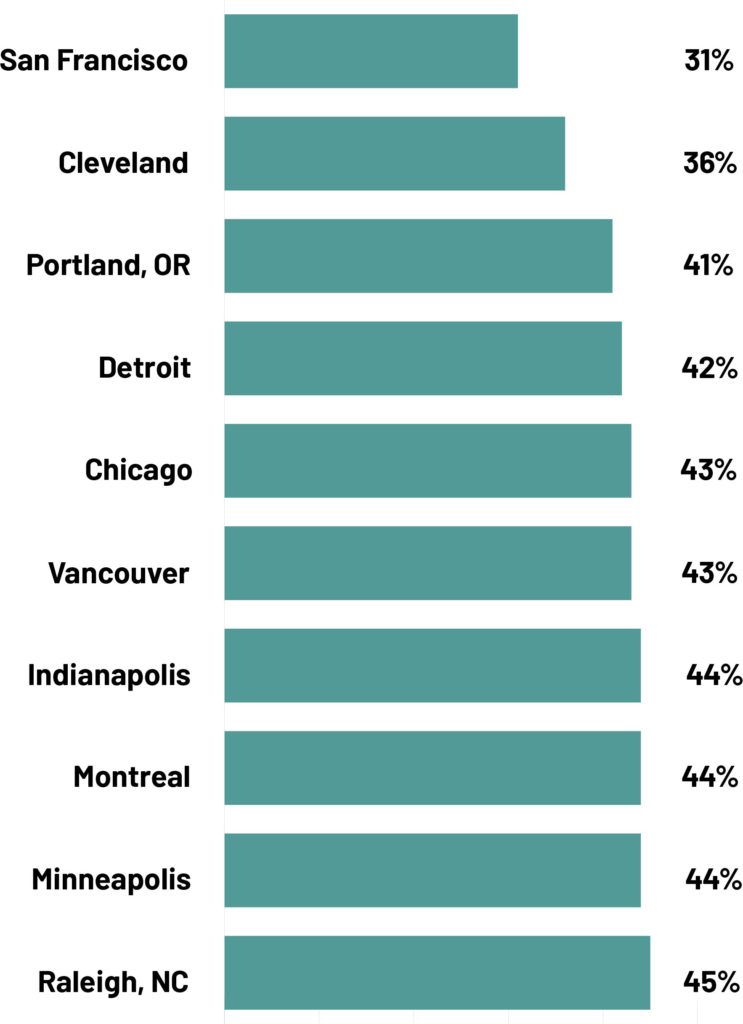
Downtowns across the country are struggling to recover from COVID-19, Bloomberg columnist Justin Fox reports. A recent study from the University of California, Berkeley used cell phone data from cities across the country to compare business district activity in the spring of this year with activity prior to the outbreak. The slowdown is worse in San Francisco than any other city, with only activity at only 31% of pre-pandemic levels.
Since the onset of the pandemic, San Francisco has been the subject of pretty much constant analysis and critique, with observers calling out its struggles with wildly expensive housing, persistent homelessness, drug abuse, rampant petty crime and dysfunctional governance. These are real problems, but none is new. If you want to know what’s changed about the city since February 2020, the main answer is simply that large employers there and in surrounding areas, as well as those they employ, took to working from home with greater alacrity at the outset of the pandemic and have stuck to it with more persistence than their counterparts anywhere else in the US.
The building access company Kastle has been tracking and reporting keycard and fob data in the 2,600 buildings and 41,000 businesses it serves, across 138 cities. Overall, Kastle’s weekly Back-to-Work Barometer shows growing occupancy. “Austin, Texas still leads the way in office occupancy, rising more than a point to 64.3%, the highest rate for any single city since the pandemic began,” the company reports. That’s 64.3% of pre-pandemic activity levels. Clearly, downtowns have a long way to go, which is having profound effects on real estate, infrastructure, and construction.
